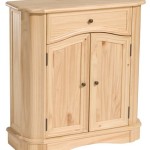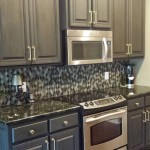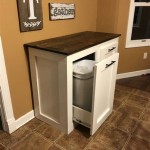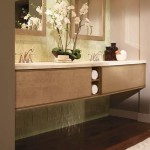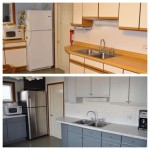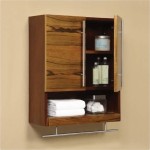Maximizing Your Craft Cabinet Storage
Crafting, a pursuit often associated with creativity and relaxation, can quickly become overwhelming if the necessary supplies lack organization. A well-organized craft space, particularly the craft cabinet, can significantly enhance the crafting experience by reducing clutter, saving time, and fostering a more productive environment. Effective storage solutions are crucial for maximizing the available space within a craft cabinet and ensuring that all materials are easily accessible and properly preserved. This article will explore key strategies for optimizing craft cabinet storage, focusing on techniques and organizational tools that promote efficiency and accessibility.
The initial step in maximizing craft cabinet storage involves a thorough assessment of one's crafting needs. This assessment should encompass identifying the types of crafts undertaken, the frequency of their execution, and the specific materials and tools required. A detailed inventory of existing supplies is essential, allowing for the identification of duplicates, expired items, and materials that are no longer needed. This process is not merely about decluttering but also about creating a tailored storage system that aligns with one’s individual crafting habits and preferences. Discarding unwanted or unusable items frees up valuable space and simplifies the organization process.
Once the inventory is complete, the next step is to categorize the remaining items. This categorization should be based on factors such as material type (e.g., paper, fabric, yarn), tool type (e.g., cutting tools, measuring tools, adhesives), and project type. Clear categorization facilitates efficient retrieval of specific items when needed and prevents the mixing of materials that could lead to damage or disorganization. Subcategories can be further developed within each main category to provide even greater specificity. For example, the “paper” category might be subdivided into cardstock, scrapbook paper, and printer paper, each with its designated storage area.
Utilizing Vertical Space with Adjustable Shelving
One of the most effective ways to maximize storage in a craft cabinet is to fully utilize the available vertical space. Adjustable shelves are paramount in this regard, allowing for the customization of shelf heights to accommodate items of varying sizes. Fixed shelves often result in wasted space above shorter items, diminishing the overall storage capacity of the cabinet. Adjustable shelves can be repositioned to create optimal spacing, ensuring that no space is left unused. This adjustability is particularly beneficial for storing bulky items or oddly shaped tools that would otherwise be difficult to accommodate.
The material of the shelves themselves is also a consideration. Sturdy shelves are crucial for supporting the weight of craft supplies, particularly heavier items such as paint cans, rolls of fabric, or large collections of beads. Shelves manufactured from solid wood or reinforced metal are generally more reliable than those made from weaker materials like particleboard. Additionally, the depth of the shelves should be appropriate for the size of the items being stored. Deep shelves can be useful for accommodating larger items, but shallower shelves may be preferable for smaller items to prevent them from getting lost or buried in the back.
Furthermore, consider adding narrow shelves to the inside of cabinet doors. These can be perfect for storing frequently used items like small paint bottles, brushes, or rolls of tape. Ensure that the shelves are securely attached and do not interfere with the closing of the door. This strategy effectively utilizes space that would otherwise remain unused, providing convenient access to essential crafting tools.
The arrangement of items on the shelves should also be carefully considered. Grouping similar items together promotes visual consistency and simplifies the search process. For example, all paints could be stored on one shelf, while all adhesives could be stored on another. Placing heavier items on lower shelves enhances stability and reduces the risk of items falling and causing injury or damage. Lighter, more delicate items can be stored on higher shelves where they are less likely to be accidentally bumped or damaged.
Implementing Drawer Organizers and Dividers
Drawers within a craft cabinet offer a convenient storage solution for smaller items, but they can quickly become disorganized without proper organization. Drawer organizers and dividers are essential for maximizing the efficiency of drawer space and preventing items from becoming jumbled together. These organizers come in various forms, including adjustable dividers, pre-formed trays, and modular containers. The choice of organizer will depend on the specific items being stored and the configuration of the drawers.
Adjustable dividers are particularly useful for creating custom compartments within drawers, allowing for the separation of different types of items. These dividers can be easily repositioned to accommodate changes in storage needs over time. Pre-formed trays, often made from plastic or fabric, provide designated spaces for specific items, such as beads, buttons, or embroidery floss. Modular containers offer even greater flexibility, allowing for the creation of a highly personalized storage system. These containers can be stacked, arranged, and rearranged to suit the evolving needs of the craft space.
Clear containers are especially beneficial for drawer storage, as they allow for easy identification of the contents without having to open each container. Labeling the containers with descriptive labels further enhances the organization process. Labels can be affixed directly to the containers or attached to small tags that are visible from the front of the drawer. This ensures that items can be quickly located and retrieved without having to rummage through the entire drawer.
Consider lining the bottoms of drawers with non-slip material to prevent items from sliding around when the drawer is opened and closed. This is particularly important for storing delicate or breakable items, such as glass beads or ceramic embellishments. Non-slip liners can also help to reduce noise and prevent items from scratching the drawer’s surface.
Leveraging Door Storage Solutions
The inside of the craft cabinet doors often represents an underutilized storage opportunity. Door storage solutions can significantly expand the storage capacity of the cabinet by providing additional space for smaller items and frequently used tools. Various door storage options are available, including over-the-door organizers, hanging baskets, and magnetic strips. The choice of storage solution will depend on the type of items being stored and the configuration of the cabinet doors.
Over-the-door organizers, typically made from fabric or plastic, feature multiple pockets of varying sizes. These pockets are ideal for storing small items such as paintbrushes, scissors, measuring tapes, and other essential crafting tools. The organizer hangs over the top of the door, requiring no installation and allowing for easy relocation if necessary.
Hanging baskets, often made from wire or metal, provide a sturdy storage solution for larger items, such as rolls of ribbon, skeins of yarn, or bottles of glue. These baskets can be easily attached to the inside of the door using hooks or screws. They offer a convenient and accessible storage option for items that are frequently used.
Magnetic strips are particularly useful for storing metal tools, such as scissors, pliers, and screwdrivers. These strips can be easily mounted to the inside of the door, providing a secure and accessible storage solution for these items. The magnetic force holds the tools in place, preventing them from sliding around or falling off. This is a particularly beneficial solution for maintaining tool organization and safety.
When selecting door storage solutions, it is important to ensure that they do not interfere with the closing of the cabinet door. Measure the available space carefully and choose solutions that are appropriately sized. Consider the weight capacity of the door and avoid overloading it with heavy items. Overloading the door can damage the hinges and prevent it from closing properly.
Lighting within the craft cabinet can significantly improve visibility and accessibility. Install LED strip lights or battery-operated puck lights to illuminate the interior of the cabinet. This will make it easier to locate items, especially in dimly lit areas. Good lighting also enhances the overall aesthetic appeal of the craft space.
Regularly reviewing and reorganizing the craft cabinet is essential for maintaining its efficiency. Periodically reassess your crafting needs and adjust the storage system accordingly. Remove any items that are no longer needed or used, and rearrange the remaining items to optimize storage space. A well-organized craft cabinet is a dynamic space that evolves along with your crafting interests and projects.

Dream Box 2 The Best Craft Storage Cabinet Ever My 100 Year Old Home

Dreambox Craft Storage Honest Review Is It Worth

Craft Storage Center From An Old Hutch Positively Splendid Crafts Sewing Recipes And Home Decor

Dream Box 2 The Best Craft Storage Cabinet Ever My 100 Year Old Home

Dream Box 2 The Best Craft Storage Cabinet Ever My 100 Year Old Home

The Craft Supplies Closet Of My Dreams Design Improvised

Dream Box 2 The Best Craft Storage Cabinet Ever My 100 Year Old Home

Iheart Organizing The Ultimate Craft Closet Organization

Organizing Craft Supplies In A Small Space Stuff Counts

Craft Storage Center From An Old Hutch Positively Splendid Crafts Sewing Recipes And Home Decor
Related Posts

